
1
Perambulator, pram, stroller, push chair, carrycot, child carrier, buggy, where did they come from, and what’s right for you?
With so much on the market, all with extreme variations in price, lets take a look at how the modern pram evolved. It may help you to appreciate what features you need and what you can do without.

2
In 1733, William Kent, an English landscape gardener, was commissioned by the Duke of Devonshire to build a contraption to carry his children. It was designed to be pulled by a goat or small pony.
This early pram is on display at Chatsworth House in Derbyshire, UK.
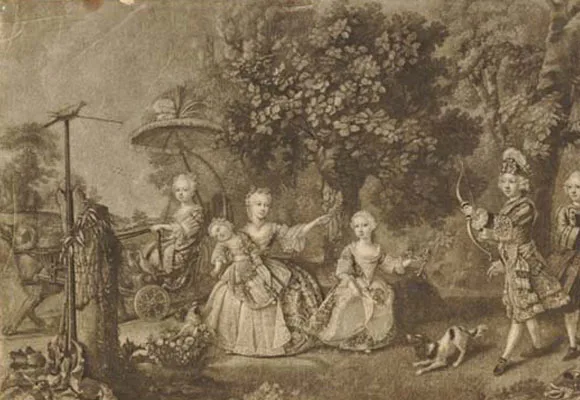
3
The idea took off, and was embraced by the Royal family.
Here the Children of their Royal Highnesses Frederick and Augusta, Prince and Princess of Wales, are pictured, with the carriage being pulled by a ram.
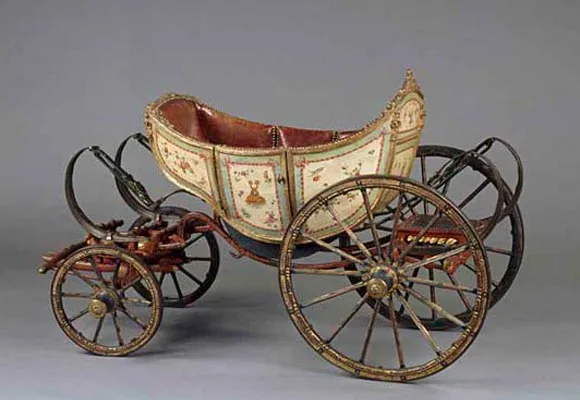
4
Queen Marie Antoinette of France saw fit to use this carriage for her son Louis-Charles Dauphin of France, who later became Louis XVII of France.
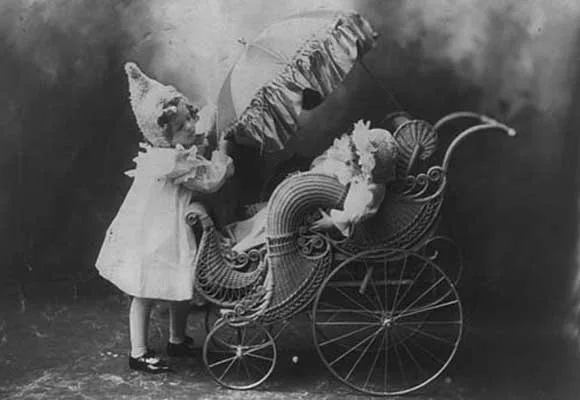
5
Benjamin Potter Crandall sold the first baby carriages from America in 1830.
His son, Jesse Crandall made additions to the standard models, including a brake, a model which folded, parasols and an umbrella hanger.

6
By 1840, the baby carriage became extremely popular.
Queen Victoria bought three carriages from Hitchings Baby Store in London. Built of wood or wicker, with brass joints. They made models and named them after royalty; The Princess, Duchess, Balmoral and Windsor were the most popular models.
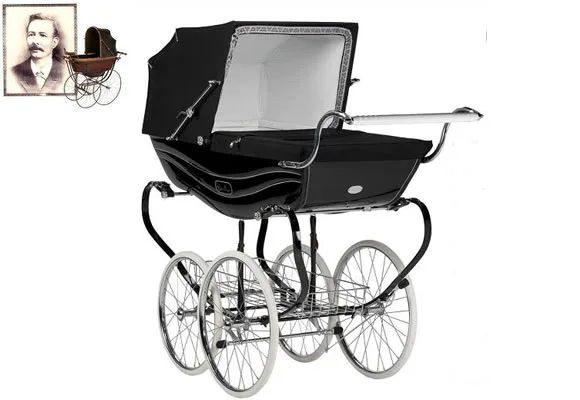
7
The 134-year-old Yorkshire pram company Silver Cross was founded by engineer William Wilson, who invented a spring suspension system with a reversible folding hood, the modern pram. They made a special model in 1948 for baby Prince Charles.
The company collapsed in 2002, but now owned by Alan Halsall who revived the luxury pram brand, winning high profile customers, including Gwyneth Paltrow and Sarah Jessica Parker.
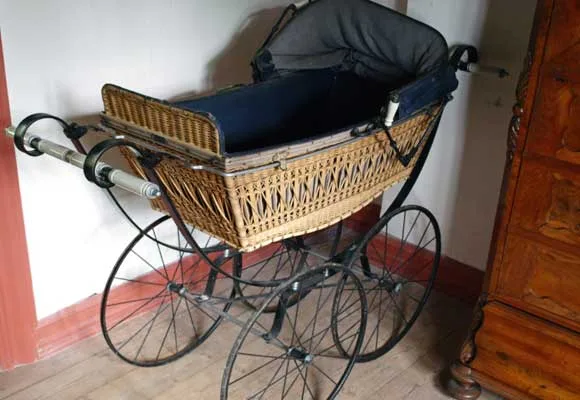
8
1889, William Richardson patented his idea of the first reversible stroller in the USA.
The bassinet was designed so it could face out or in towards the parent. He also made structural changes to the carriage. Wheels in the stroller could rotate on 360 degrees independently from each other.
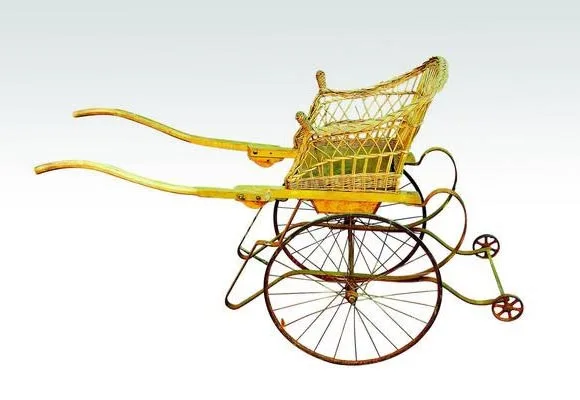
9
This French “Pousser” made of wicker with a leather seat, was similar to the then popular style that was being used in many contries around the world.
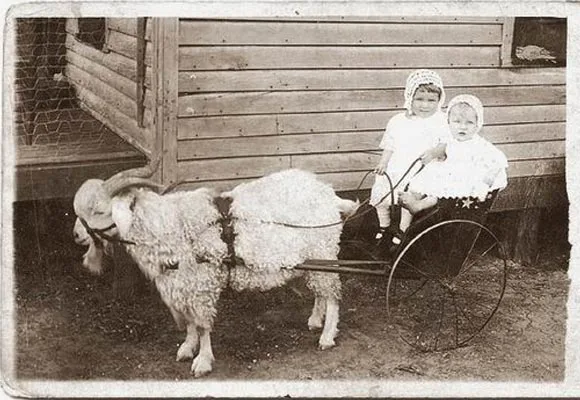
10
Less wealthy families had adapted to using William Kent’s style of child-carrier, that were designed to be pulled by goats, or dogs.
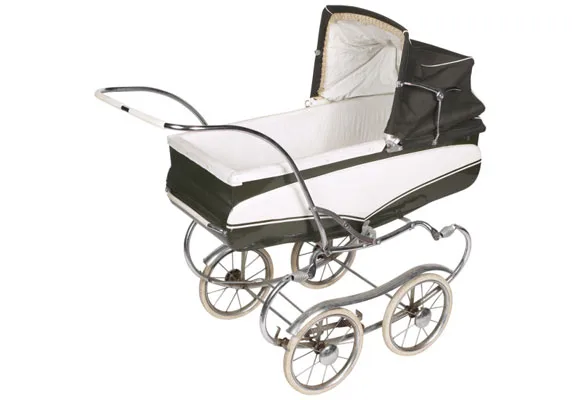
11
Thanks to the baby boom after WWI, baby carriages became available to more families, which demanded better saftey modifications.
Included were new features like larger wheels, brakes, deeper prams (to stop little ones climbing out), and sturdier frames began to appear.
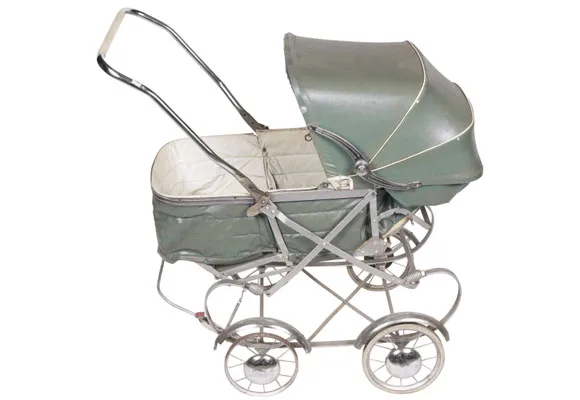
12
Pram styles continued to impress, like this pale green metal pram with chrome handle, hub caps and trim and small rubber tyres, cushioned and lined inside with white vinyl. Large hood of pale green vinyl covers one end, and it came with a detachable mattress.
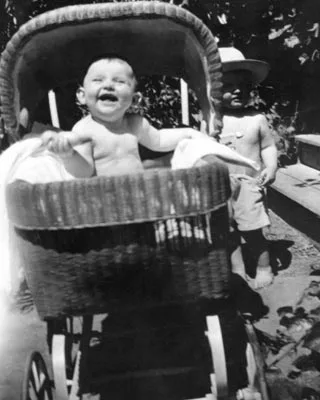
13
By the 1950s, baby carriages were a must have for any new parents. Cheap materials and safe designs made buggies affordable and popular.
Giuseppe Perego founded Italian company Peg Perego, in 1949, which revolutionised the market by designing carriages and strollers using ‘rubberized fabric’ instead of sheet metal and wicker.
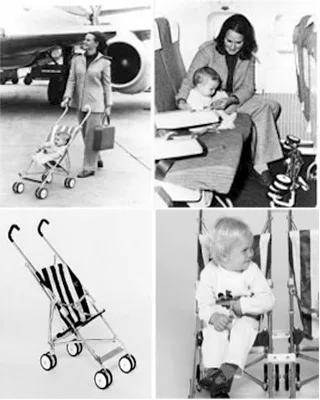
14
An aeronautical engineer, on hearing his daughter’s complaints about travelling from England to America with her heavy pram decided to design the first true umbrella stroller with an aluminium frame and blue and white stripes.
Owen Maclaren then founded Maclaren which manufactured the revolutionary lightweight design and continues to be the model of practicality.
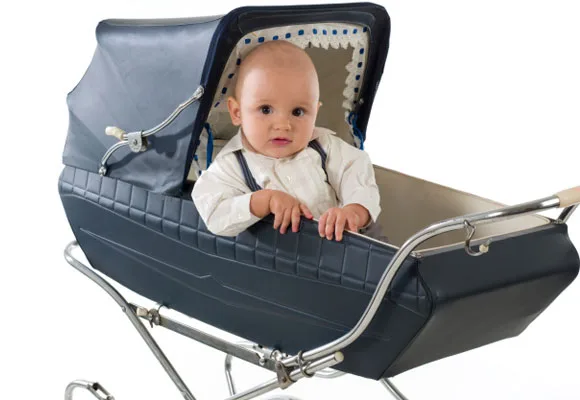
14
Easy to clean vinyl is all the rage and even though the stroller (baby in a sitting position, usually facing forwards) had become extremely popular, bassinette style prams were still manufactured for newborn babies not able to support their own head.
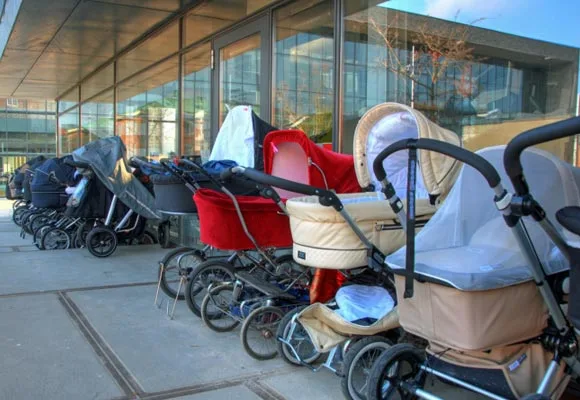
16
By the 1980’s companies were adapting to demand for more versatile and safe stroller. The 1940’s American company Graco, who use to make metal products, took a new direction and by the 80’s, had developed the combination stroller and child safety seat which included the five point harness.
From there the following adaptations have made the lives of many parents that much easier.

17
New designs tailoring to the needs of the growing child has seen the development of adjustable seat positions.
Babies and toddlers can sit up straight or recline to sleep, while still on the move.
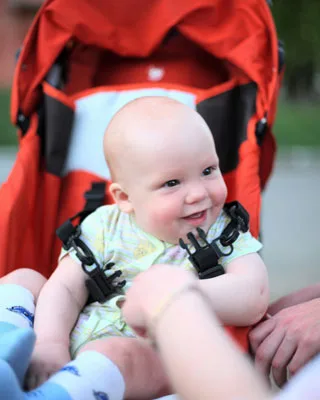
18
July 2008 Australian Safety standards required that prams and strollers sold in Australia meet a number of safety features, including a warning label, a tether strap (to help carers retain control of prams), a restraint harness and parking brake.
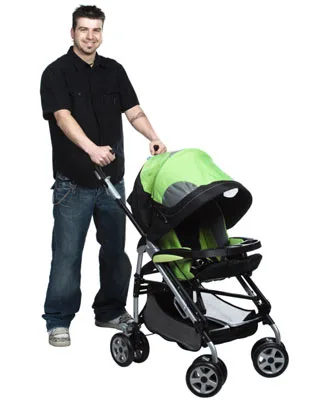
19
After years of it being unfashionable for a man to be seen pushing a stroller, many prams are now are made with hight adjustable handles to suit the taller ‘pusher’.

20
Pram designers are conscious of the width of most major supermarket entries and exits (or is it the other way around), to make it easier for parents to shop.

21
We can be thankful for the modern designs for twins like this Mountain buggy Duo.

22
Or even triplets
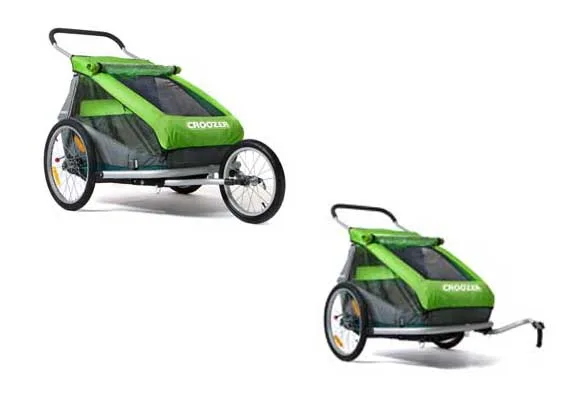
23
Keeping fit becomes easier if you can jog along behind your baby or child in three wheeled prams with soft tyres and suspension that absorb the bumps.
Or for ‘complete family mobility’ Croozer, have designed the the 3-in-1 jogger with detachable wheel, or use the hitch arm and pull one or two children along behind your bike.
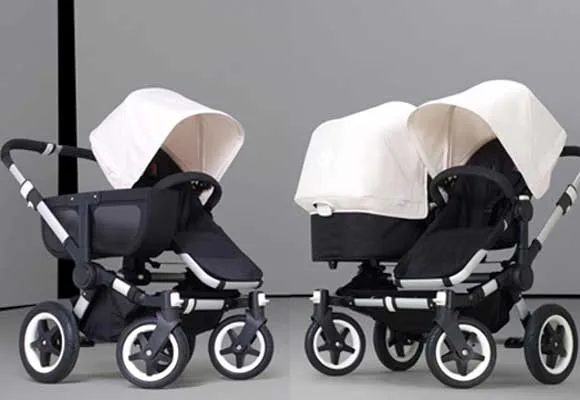
24
The Bugaboo Donkey is a state-of-the-art stroller that can be transformed from a single child-carrier with a sidecar for carrying packages, to a double child-carrier. Everything you need, and so it should, as it will set you back a tidy sum of around $2000, and has been dubbed the sports car of the stroller world.

25
Is it a pram? a highchair? a shopping trolly, a spacecraft? The Stokke Xplory might look strange but it’s design centred around a central bar, like a spinal cord makes it all these things (ok not a spacecraft) and more.
Love the hand warmers.
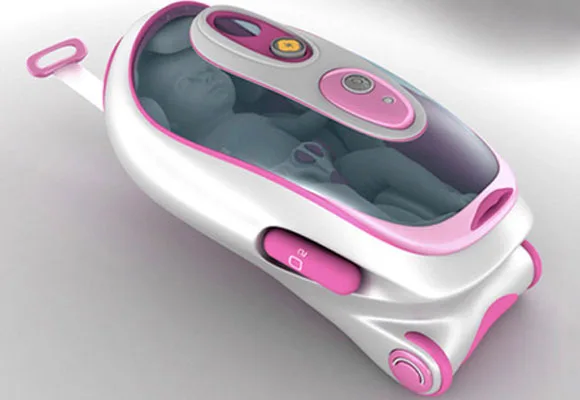
26
So… what’s next?



.png?resize=380%2C285)






